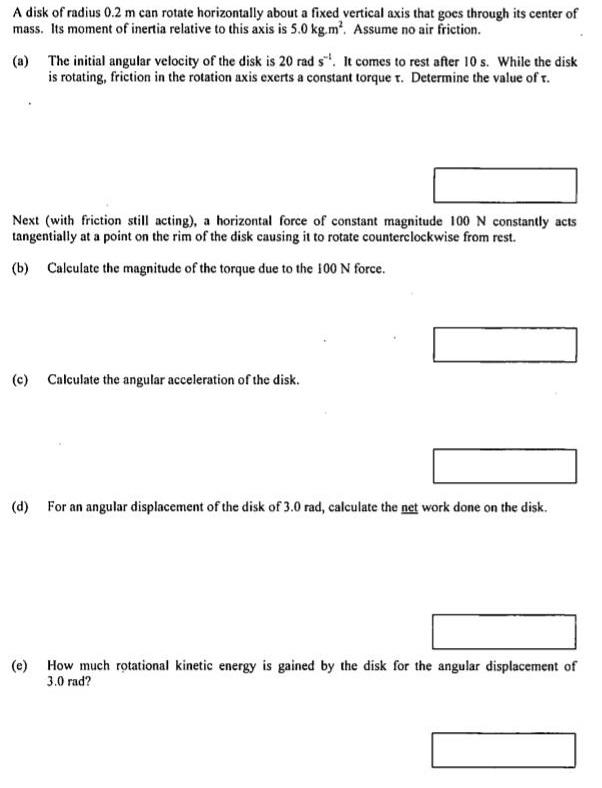Answered step by step
Verified Expert Solution
Question
1 Approved Answer
A disk of radius 0.2 m can rotate horizontally about a fixed vertical axis that goes through its center of mass. Its moment of

A disk of radius 0.2 m can rotate horizontally about a fixed vertical axis that goes through its center of mass. Its moment of inertia relative to this axis is 5.0 kg.m. Assume no air friction. (a) The initial angular velocity of the disk is 20 rad s. It comes to rest after 10 s. While the disk is rotating, friction in the rotation axis exerts a constant torque r. Determine the value of r. Next (with friction still acting), a horizontal force of constant magnitude 100 N constantly acts tangentially at a point on the rim of the disk causing it to rotate counterclockwise from rest. (b) Calculate the magnitude of the torque due to the 100 N force. (c) Calculate the angular acceleration of the disk. (d) For an angular displacement of the disk of 3.0 rad, calculate the net work done on the disk. (e) How much rotational kinetic energy is gained by the disk for the angular displacement of 3.0 rad?
Step by Step Solution
★★★★★
3.46 Rating (156 Votes )
There are 3 Steps involved in it
Step: 1
Data Given The radius of the disk r 02 m Moment of Inertia of the disk I 5 ...
Get Instant Access to Expert-Tailored Solutions
See step-by-step solutions with expert insights and AI powered tools for academic success
Step: 2

Step: 3

Ace Your Homework with AI
Get the answers you need in no time with our AI-driven, step-by-step assistance
Get Started


